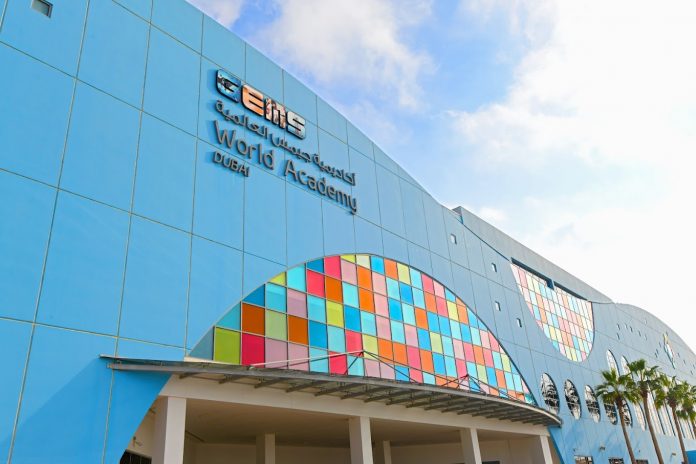At GEMS World Academy – Dubai, we provide an award-winning education. We have huge ambition and aspiration for every student, and our commitment to their success is combined with excellent pastoral support to make sure that students feel safe, secure and successful at all times.
Our students develop a passion for learning and a capacity for independent thinking. We have a strong record of academic success that is reflected in our outstanding IB results. True to the aims of our founder, Mr. Sunny Varkey, we encourage intellectual curiosity and entrepreneurial spirit, and we foster a real sense of communal endeavor.
We are an inclusive, positive, stimulating, demanding and open-minded community. We enable our students to discover genuine interests that extend beyond the classroom, and to express themselves by encouraging a broad understanding of the world, a social conscience and a considered approach to other people. We strive to ensure that GEMS World Academy – Dubai students have an understanding of their place in society, both locally and globally, and that they seek to always make a positive impact upon it.
We experiment, we demand, we persevere. GEMS World Academy – Dubai is a place with high expectations, relentless ambition and real scholarship, where courtesy and manners matter. GEMS World Academy – Dubai is a place where hard work and a genuine commitment to achieve will create those avenues to success.
WHY TEACHING DESIGN THINKING IS CRUCIAL IN THE AGE OF AI?
In a time of extraordinary technological transformation, with artificial intelligence (AI) reshaping the way we live, work, and interact, educators face an unprecedented challenge: how do we prepare students for a future we cannot fully predict? Eric Hoffer once said, “In times of change, learners inherit the Earth, while the learned will find themselves beautifully equipped to deal with a world that no longer exists.” This quote resonates more today than ever as the pace of change continues to accelerate. While AI and automation revolutionize industries, there is an urgent need to teach students human-centered skills that AI cannot replicate, and this is where design thinking comes in. Design thinking, a problem-solving approach that emphasizes empathy, creativity, and iteration, offers a framework for preparing students not only to work alongside AI but to lead in a future driven by innovation. At its core, design thinking focuses on understanding real human needs, defining problems, ideating solutions, prototyping, and refining through testing. It’s a dynamic and iterative process that cultivates the skills essential for thriving in a world increasingly influenced by AI.
At the heart of design thinking is empathy, a distinctly human attribute. While AI can process vast amounts of data, it cannot understand human emotions, experiences, or complex social issues. Teaching students to approach problems from a human perspective ensures that their solutions are not only technically sound but also socially responsible and compassionate. In a world where automation often dehumanizes processes, empathy remains an irreplaceable advantage. Design thinking nurtures this mindset, encouraging students to think divergently and come up with original ideas that AI, bound by patterns and data, cannot achieve. It enables true innovation, empowering students to challenge assumptions and explore uncharted possibilities.
In an increasingly digital world, human collaboration and communication remain indispensable. While AI may facilitate certain aspects of teamwork, the emotional intelligence needed for effective communication is uniquely human.
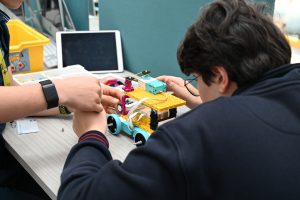
Design thinking promotes collaboration, encouraging open dialogue, shared problem-solving, and the ability to build on each other’s ideas—skills that will remain critical no matter how advanced AI becomes.
At its core, design thinking also fosters critical thinking. It requires students to question assumptions, evaluate information, and iterate on ideas—processes that AI can support but not replicate. In a world where AI-generated solutions may be plentiful, humans will need to assess these solutions critically, ensuring they are ethical, viable, and aligned with societal values. By teaching students how to think, rather than what to think, design thinking prepares them to navigate the complexities of the modern world with adaptability and resilience.
At GEMS World Academy, design thinking is not just a buzzword but an integral part of the curriculum, helping students prepare for the challenges of tomorrow. One prime example is the Teens in AI Challenge, where students applied design thinking to develop AI-powered solutions addressing global issues. One team created a web extension to filter out hate speech on social media, promoting peace and equity, while another group focused on climate change, designing an app to calculate the carbon footprint of food choices and encourage sustainable living. This problem-solving mindset isn’t limited to hackathons or special events—it’s embedded in everyday learning. Even students as young as ten are leveraging design thinking to make a real-world impact. One such student, driven by a desire for equality, created a machine learning system that translates American Sign Language into multiple spoken languages, providing vital support for people with hearing impairments during emergencies.
At GEMS, design thinking goes beyond competitions and permeates the entire curriculum, blending seamlessly with the transdisciplinary nature of the IB program. A growing number of students at the IB Diploma level are engaging in projects that span from designing sustainable furniture to creating apps like “Carbon Wallets,” which gamify recycling to encourage teenagers to adopt more environmentally responsible habits. These initiatives aim to foster not just innovation but also responsible global citizenship.
The focus on design thinking starts early, with students in the Middle Years Programme (MYP) using cutting-edge technology like 3D printers, laser cutters, and robotics kits—including NAO robots, VEX and Spike Prime sets, Zumis, Spheros, programmable drones, and Raspberry Pi kits—to develop innovative solutions for real-world problems.
A recent Grade 10 unit on “The Digital World & AI” saw students designing city planning boards and developing interactive “Smart City” models. These projects demonstrated their creativity and technical prowess while also showcasing a deep understanding of how AI can enhance urban efficiency and sustainability. These efforts underscore GEMS’ commitment to fostering both innovation and a forward-thinking approach to solving complex challenges in the digital age.


Our students have opportunities to collaborate with industry experts and participate in high-profile competitions like the Project Design Space organized by DiDi and the NASA Space Apps Challenge. They also engage in practical learning experiences, such as visiting the Apple Store to explore app development. In addition, students attend events like the GEMS AI Confluence and actively compete in challenges like the GEMS Innovation Challenge.
One standout example is the Grade 11 Computer Science team, Virtue Learn, which earned a Silver Award in the GEMS Global Innovation Challenge. Their project, designed to promote inclusivity in education through virtual reality, aligns with the UN Sustainable Development Goal of “Education for All,” highlighting the school’s commitment to leveraging technology for social good. 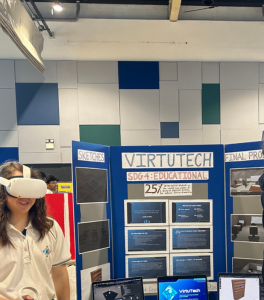
Educators might assume that the biggest challenge in incorporating design thinking into the curriculum is a lack of resources. However, the reality is that problem-solving doesn’t come with a price tag—it’s all about adopting the right mindset. By integrating critical thinking into daily lessons, teachers can move away from a content-driven approach and instead focus on inquiry-based, contextual learning. This allows students to engage with content through independent exploration and problem-solving, fostering deeper understanding and creativity.
As AI continues to advance, the future will belong to those who can innovate, empathize, and solve complex problems. Teaching design thinking is not just about adapting to new technologies; it’s about equipping students with the skills to shape those technologies in ways that serve humanity. In the words of Steve Jobs, “Design is not just what it looks like and feels like. Design is how it works.” As we move further into an AI-driven future, design thinking will remain the essential tool that ensures technology works for people, not the other way around. In this era of AI, teaching design thinking is no longer just important—it is essential.
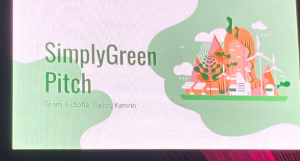
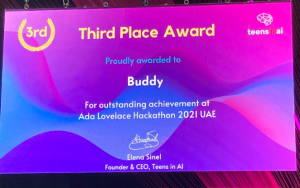
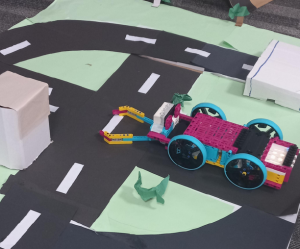
About the Author
 I am Zunaira Siddiqi. I am a software engineer with specialism in neural networks. Have been an educator of technology for past 16 years. I currently work as the MYP Coordinator and Computer Science Teacher at GEMS World Academy in the UAE. I manage the MYP curriculum, oversee certification processes, and work on improving personal project results. I have a strong background in Digital Design and Computer Science, where I focus on developing engaging curricula and integrating advanced technologies like robotics, VR, and AI. I am proud to have helped students achieve top honors in both global and regional competitions and to have been recognized as a Microsoft Innovative Educator. Before joining GEMS World Academy, I held important positions at Dubai International Academy and Raffles World Academy where I played a key role in Technology integration, staff training, and student development. I am also currently pursuing the NPQSL course to continue advancing my skills in education and student engagement.
I am Zunaira Siddiqi. I am a software engineer with specialism in neural networks. Have been an educator of technology for past 16 years. I currently work as the MYP Coordinator and Computer Science Teacher at GEMS World Academy in the UAE. I manage the MYP curriculum, oversee certification processes, and work on improving personal project results. I have a strong background in Digital Design and Computer Science, where I focus on developing engaging curricula and integrating advanced technologies like robotics, VR, and AI. I am proud to have helped students achieve top honors in both global and regional competitions and to have been recognized as a Microsoft Innovative Educator. Before joining GEMS World Academy, I held important positions at Dubai International Academy and Raffles World Academy where I played a key role in Technology integration, staff training, and student development. I am also currently pursuing the NPQSL course to continue advancing my skills in education and student engagement.



